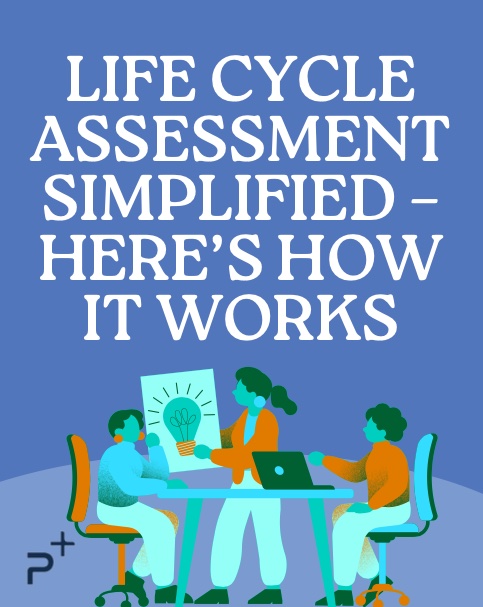Life Cycle Assessment (LCA) Explained – A Beginner’s Guide
Life Cycle Assessment: See Your Product’s Impact Beyond the Surface
Life Cycle Assessment is the process of evaluating all environmental impacts associated with every stage of a product’s life. It helps companies:
- Quantify the carbon footprint of a product
- Identify wasteful processes and optimize them
- Improve product design based on real data
- Make credible climate claims backed by facts
Example: A company producing t-shirts may find through LCA that dyeing fabric contributes more emissions than transport or packaging. Knowing this allows smarter improvements.
The 4 Key Stages of LCA: A Step-by-Step Guide

1. Goal & Scope Definition
Define boundaries and select which environmental impacts to include (carbon, water, land use, biodiversity, etc). Decide what you want to assess:
- A full product lifecycle (cradle to grave)
- Or part of it (“cradle to gate”) Define boundaries and what environmental impacts you include (e.g. carbon, water, land use).
2. Inventory Analysis (LCI)
This step involves gathering all data related to inputs and outputs:
- Electricity used in production
- Water consumption
- Fuel burned in transport
- Emissions and waste generated
3. Impact Assessment
This is where you calculate impact metrics — such as carbon footprint, water footprint, resource depletion, and ecosystem health impacts. Translate data into environmental categories:
- Greenhouse gas emissions
- Resource depletion
- Human toxicity This is where you get a carbon footprint or water footprint estimate for your product.
4. Interpretation
Use the results to make decisions:
- Which processes to redesign
- Which suppliers to switch
- What to highlight in ESG reporting
- How to reduce emissions or waste
Why Life Cycle Assessment Matters More Than Ever in 2025
In today’s climate conscious world, it’s no longer enough to say a product is eco-friendly. Stakeholders, whether customers, regulators, or investors, want proof. That’s where Life Cycle Assessment comes in. An LCA is a science based method to measure the environmental impact of a product or service across its entire life cycle from raw material extraction, manufacturing, transport, use, and final disposal. Whether you are a sustainability leader, startup founder, or curious consumer, LCA is your map to responsible, data-driven decisions.
Why LCA
- Improves Product Design Helps teams reduce resource use and emissions from the start.
- Supports Climate & ESG Reporting Backs up your sustainability disclosures with hard data.
- Builds Trust with Stakeholders Communicates transparency and responsibility to your customers and partners.
- Reduces Risk and Cost Identifies areas of inefficiency and helps plan smarter supply chains.
LCA Tools We Recommend
- OpenLCA – Free and open-source
- SimaPro – Professional-grade assessment tool
- One Click LCA – Construction and real estate focused
- Watershed – Corporate emissions platform
Whether you’re just getting started or scaling your sustainability operations, Planetary Plus is here to help you turn ambition into action. Let’s build a low-carbon future together—one product at a time.
Contact us today to get started.
